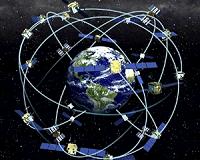 |
London, UK (SPX) Mar 11, 2011 The GNSS Interference, Detection and Monitoring Conference 2011 follows Tuesday's Royal Academy of Engineering report that set out the risks of GPS disruption from solar storms or illegal jamming and assessed what can be done to reduce impacts on society. Solutions put forward included eLORAN (Enhanced Long Range Navigation), a revamped version of the 1950's LORAN terrestrial radio navigation systems used extensively by the US military which have been brought into the digital age and demonstrated as an ideal accompaniment to GPS. eLoran uses high-power, land-based transmitters, operating on low frequencies. The conference saw researchers from the GAARDIAN project announce hugely encouraging results for the first ever trial of joint GPS/eLORAN receivers which tested their ability to detect anomalies caused by natural effects such as solar weather, and GNSS interference. Bob Cockshott, Location and Timing Programme Director for the Digital Systems KTN and organiser of the Conference said, "This is a technology that must be central to future development of our location and timing systems. eLORAN is one of many viable solutions we have heard that can deliver a more reliable navigation infrastructure but it is going to take government, academia and industry to come together to drive this forward." George Shaw, from the General Lighthouse Authorities, a member of the GAARDIAN project, who have carried out their own eLORAN trials on maritime systems in the North Sea, believes the technology has shown it can deliver benefits for maritime navigation and has great potential for land use. "This research has proved eLORAN is a viable accomplice to GPS and our transport, power, finance and communications infrastructures can be robustly safeguarded through its exploitation," said Shaw. Charles Curry, Managing Director of Chronos Technology Ltd and leader of the GAARDIAN team also announced a follow up project - SENTINEL, which brings on board the Association of Chief Police Officers to look at the ability of GPS/eLORAN systems to mitigate the influence of illegal jammers. He believes that while industry interest in their research is growing, government has a major role to play in driving the process. "We are now calling on government to confirm future funding for the UK's eLORAN transmission centre. Only then will industry have the guarantees it needs to drive commercial development," said Curry. Speakers at the one day conference looked at a range of technologies and solutions that might feed into a more sustainable and reliable navigation infrastructure. These included: + The International Space Innovation Centre's Security and Resilience Unit - looking at innovation within our satellite infrastructure. + Professor Washington Ocheing, Imperial College London - asking whether money spent on multimillion pound GNSS integrity systems such as those for the Galileo project - maybe better spent developing RAIM (Receiver Autonomous Integrity Monitoring) systems inserted into the receiver + QinetiQ - reporting on the latest technologies they are testing on-board harrier jump-jets as well as new antenna technologies to protect the GPS signal.
Share This Article With Planet Earth
Related Links National Physical Laboratory GPS Applications, Technology and Suppliers
 Coalition To Save Our GPS Launched
Coalition To Save Our GPS LaunchedWashington DC (SPX) Mar 11, 2011 Representatives from a wide variety of industries and companies have announced that they have joined together to form the "Coalition to Save Our GPS" to resolve a serious threat to the Global Positioning System (GPS) - a national utility upon which millions of Americans rely every day. The threat stems from a recent highly unusual decision by the Federal Communications Commission (FCC) to ... read more |
|
| The content herein, unless otherwise known to be public domain, are Copyright 1995-2010 - SpaceDaily. AFP and UPI Wire Stories are copyright Agence France-Presse and United Press International. ESA Portal Reports are copyright European Space Agency. All NASA sourced material is public domain. Additional copyrights may apply in whole or part to other bona fide parties. Advertising does not imply endorsement,agreement or approval of any opinions, statements or information provided by SpaceDaily on any Web page published or hosted by SpaceDaily. Privacy Statement |